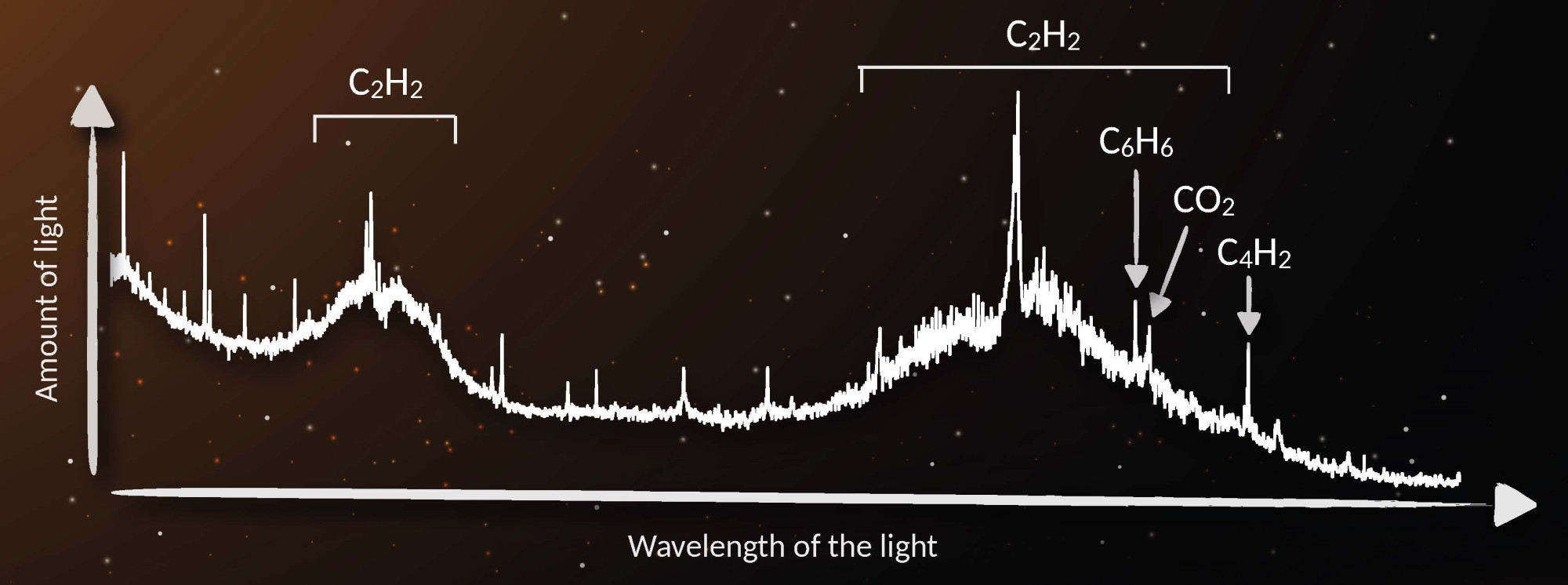James Webb Space Telescope Discovery
Clicking on each image will open the full resolution one. Try it!Clicking on "Raw images" image will yield all the relevant raw images.
Astronomers spot benzene in planet-forming disk around star for first time
An international team of astronomers including several Dutch researchers has observed the benzene molecule (C6H6) in a planet-forming disk around a young star for the first time. Besides benzene, they saw many other, smaller carbon compounds and few oxygen-rich molecules. The observations suggest that, like our own Earth, the rocky planets forming in this disc contain relatively little carbon. The scientists publish their findings Thursday evening in the journal Nature Astronomy.
The researchers studied the young, small star J160532 (one tenth of the mass of our sun) some 500 light years away from us towards the constellation Scorpio. Around such small young stars, many rocky planets similar to Earth form, in disks made of gas and dust. Until now, it has been difficult to study molecules in the warm inner part of these disks where the majority of planets form due to the limited sensitivity and spectral resolution of previous observatories.
For their research, the scientists used data from the MIRI spectrometer aboard the James Webb Space Telescope. MIRI can see right through dust clouds and is particularly well suited to measure hot gas in inner disks. The main optics of the MIRI spectrometer were designed and built by the Netherlands Research School for Astronomy (NOVA).
"This is exactly the kind of science the MIRI spectrometer was designed for," says Ewine van Dishoeck (Leiden University), who has been involved in building Webb and the MIRI instrument from the beginning. "The spectra contain a wealth of data that tell us something about the chemical and physical composition of planet-forming disks."
Besides the first ever observation of benzene in a planet-forming disk, the researchers also saw the hydrocarbon diacetylene (C4H2) for the first time, and an unusually large amount of acetylene gas (C2H2), a very reactive hydrocarbon. Strikingly, there is very little water and carbon dioxide in this disc. Those oxygen-rich compounds are often found in other dust discs, though. Identifying these molecules required close collaboration with chemists who measure the spectra (the chemical fingerprints) in the laboratory.
The researchers suspect that the benzene and (di-)acetylene are released in the disc following the destruction of carbon-rich dust grains by the active young star. The dust grains that remain would contain silicates with relatively little carbon. In a later phase, the low-carbon grains clump together into larger chunks. These eventually become rocky planets like Earth. This scenario may explain why our own Earth is so poor in carbon.
Meanwhile, the researchers are working out the data from over 30 other dust discs around young stars and data on 20 more discs are expected this year. In doing so, they are expected to discover other molecules and gain more knowledge about the formation of planets around stars from the very smallest ones to those that are 2-3 times the mass of our sun.
Lead author of the study Benoît Tabone (now CNRS researcher at Université Paris-Saclay in France and previously affiliated Leiden University) concludes: "This work is only a first glimpse of the physical and chemical conditions in which earth-like planets like our Earth are formed." Co-author Aditya Arabhavi, PhD student at the University of Groningen, adds: "Many more molecules will be discovered, either in the disk of J160532 or in other disks. Webb is a 'playground' not only for astronomers, but also for experts in molecular physics."
Credit: Astronomie.nl
 The emission lines of benzene, diacetylene and carbon dioxide can be seen as narrow peaks in the spectrum. Acetylene (C2H2) is so abundant that it gives broad humps in the spectrum. (c) JWST/MIRI/Tabone et al.
The emission lines of benzene, diacetylene and carbon dioxide can be seen as narrow peaks in the spectrum. Acetylene (C2H2) is so abundant that it gives broad humps in the spectrum. (c) JWST/MIRI/Tabone et al.